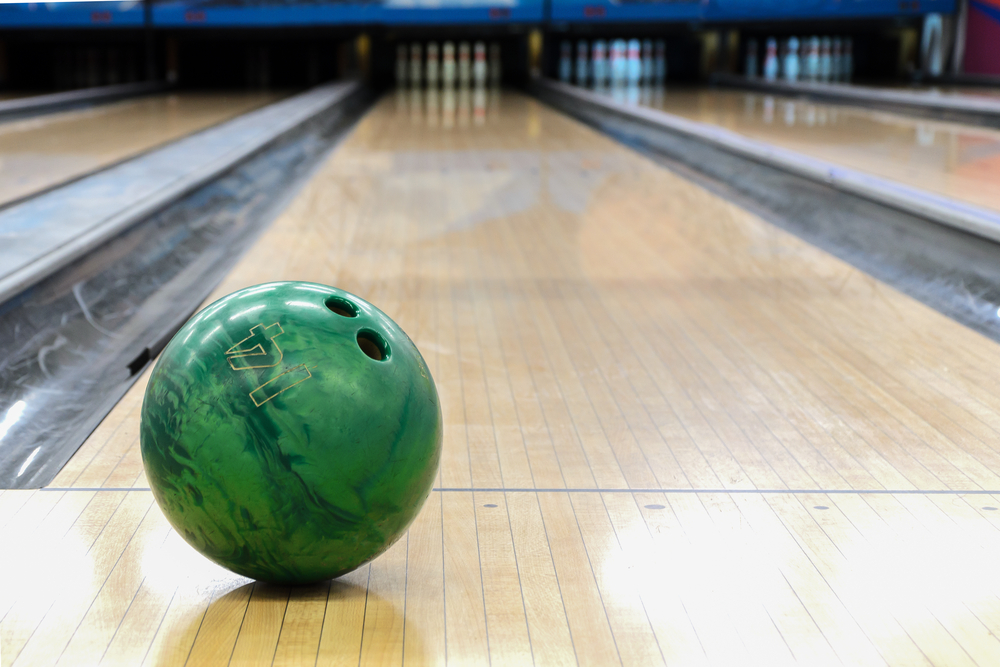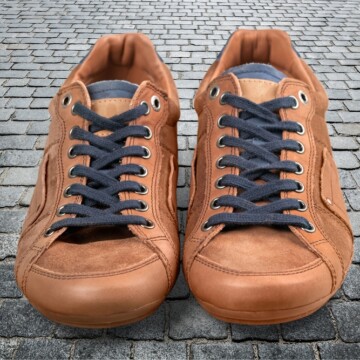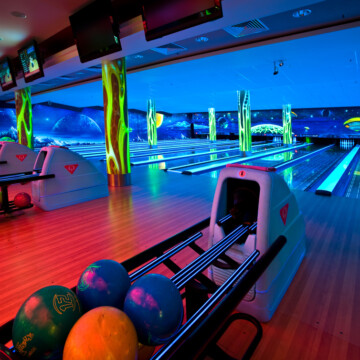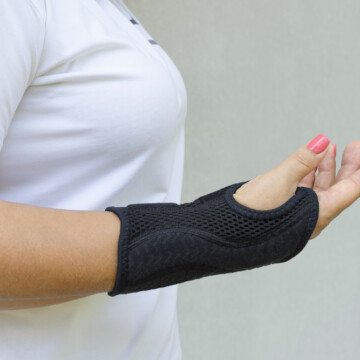
As you progress into the fascinating and intricate world of bowling (seriously, this game is a lot more complicated than people like to think), you will hear more and more phrases or terms that are new to you.
Being a novice to the terminology is perfectly fine since learning the phrases will improve your understanding of the game of bowling better and gives you an edge in your game. However, it is essential to make sure that you take time to learn its meaning when you learn a new phrase.
A couple of new terms that you may have heard throughout the bowling alley as you have bowled could have been the terms 'wet' or 'dry' lanes. Typically when we think of the terms wet and dry, we usually think of water in some shape or form.
That is not the case with our bowling alleys. Instead, the terms wet and dry refer to the saturation of oil on the lanes, a factor that could be affecting your bowling game!
Contents
What are Wet and Dry Lanes?
As a new bowler, you shouldn't worry about oil patterns too much since you'll first be working on throwing your bowling ball as accurately as possible. However, as you progress into a better bowler, you will eventually want to learn how to figure out the lane conditions or 'read the lanes' as it is commonly called.
One of the best ways to do this is to figure out if the lane is dry or wet and what that exactly means to you as a bowler.
Wet Lanes:
When bowlers talk about how a lane is wet or 'oily', they refer to the fact that there is some heavy saturation of oil on the lane. Every lane has an oil pattern applied to it. This oil pattern, in turn, affects how a bowling ball will progress down the lane and how it will hook.
When there is a lot of oil on the lane, it's wet, and bowling balls slide down the lane a longer distance before hooking. Because of the sliding, the break point, the proper place for the bowling ball to turn for the hook, can be missed.
A wet lane can usually be pretty easy to figure out and play on but don't get too confident! Some wet oil patterns increase the level of a lane's difficulty because their oil saturation is so high the bowling ball has a hard time hooking at all!
To test the oil saturation, throw a few practice balls before you begin your game while aiming for the center dot.
If your bowling ball refuses to hook, there is probably a high saturation of oil down, and you can adjust to the right to combat the lane conditions.
Dry Lanes:
As you might have figured out, a dry lane is the opposite of a wet or 'oily' lane. When a lane is dry, there is less oil down, and the bowling ball tends to hook faster as it rolls down the lane. Due to this fast hooking, many bowlers find dry oil patterns complicated to navigate.
This difficulty comes from the fact that many high-level bowlers usually utilize a hook throw (the arch of the hook varying by bowler's style) to approach the pocket of the pins at a better angle. Since dry oil patterns cause hooks to happen quickly and shorten the length of the bowling ball's approach, many bowlers experience difficulty adjusting their style to this problem.
To figure out if you are dealing with a dry lane, you can again approach the center dot. After you throw your bowling ball, watch if the ball pulls to the left as it rolls down the lane. If it does, the lane is probably dry, and you need to make adjustments to combat this issue.
Is a Urethane Bowling Ball Good For Dry Lanes?
The answer is yes! Urethane bowling balls are great for dry lanes because of their unique properties. They have a tough and smooth surface that makes them less likely to absorb oil from the lane, which can cause the ball to hook too early.
Urethane bowling balls also have a lower friction coefficient than other bowling balls. This means they will slide further on the lane before hooking, a significant advantage on dry lanes, and a disadvantage on the lanes most likely oiled, and the ball can hook too early.
What's the Best Bowling Ball for Dry Lanes?
When selecting bowling balls for dry lanes, it is essential to know the basic criteria. A bowling ball is generally made up of two parts: the ball's coverstock or surface and the ball's core.
Weight plates and hole layouts play a part in the makeup of bowling balls, but the coverstock and core make up most of the bowling ball in its entirety.
When choosing dry lane bowling balls, it is essential to look at your selected coverstock. The core is essential because it controls the ball's motion, but the coverstock is what reacts to the dryness of the lane.
You will want a bowling ball with a shiny or plastic-looking cover with a high polish (you can polish the bowling ball to suit your needs if needed). These stiff coverstocks will help you transverse dry lanes more efficiently. Poly urethane bowling balls will probably suit your needs on dry lanes the best.
We have three recommendations of the best bowling ball for dry lanes discussed below: the Pathogen X bowling ball, Pyramid Path Bowling ball, and Brunswick Rhino bowling ball. If you are more interested in finding a specific bowling ball from a brand to suit your dry lane needs, keep reading.
"Pathogen X" by Pyramid
The first is Pathogen X from the brand Pyramid. This bowling ball is one of the brand's bestsellers and for good reason. The Pathogen is a heavy-hitting bowling ball, with an excellent core, pearl reactive coverstock, and adjustable weight.
Its strength, versatility, and kickback help it navigate through dry conditions with practiced ease, ensuring no loss in power when it makes a break for the pocket.
The Pathogen X can be on the pricy side, but this is one of those cases where you are paying for a high-quality piece of equipment. Sometimes the extra price tag can be worth it for in-game improvement.
The bowling ball can be used by beginners but is recommended for more experienced bowlers since it is geared toward expert handling and powerful hooks.
"Path Rising" by Pyramid
Another good bowling ball is the Pyramid Path bowling ball; it's a great entry-level ball for beginners trying to get a handle on dry lanes. Path Rising bowling ball is built for high efficiency on dry lanes with a symmetrical core for stability and a pearl coverstock but can still be used in other conditions.
"Rhino" by Brunswick
Another good bowling ball is the Brunswick Rhino bowling ball; it's a great entry-level bowling ball for beginners trying to get a handle on dry lanes. Rhino comes in a variety of colors and weights.
It's a reactive resin ball and is great if you bowl straight and if you need to incorporate a hook. With its reactive coverstock, the Brunswick Rhino is built for high efficiency on dry to medium oiled lanes.
How Do You Make Angle Adjustments on Dry Lanes?
The key to figuring out the adjustments needed on your lane is to have base throw mastered to compare all other throws to your base throw. Many bowlers aim for the center dot during their warm-ups and make adjustments based on how their bowling ball react.
If the bowling ball does not hook very well, you may be dealing with a wet lane. You need to shift to the right and turn your shoulders to 'close' them to adjust to this. Shifting helps you adjust and deal with wet, oily lanes as you work out the lane conditions.
You probably deal with a drier lane if the bowling ball pulls to the left during your warm-up. To combat a dry lane, you must adjust yourself to the left and 'open' your shoulders.
Shifting to the left helps you navigate dry lanes better and helps your bowling ball get down the lane and hook better. The critical thing to remember while adjusting your angles is that you should make your adjustments in the same direction as the error.
If you have problems on the right side of the lane, make adjustments to the right to offset. The same can be said for the left side of the lane; make adjustments on the left side to counteract any problems you should have.
How Do You Reduce Your Bowling Hook on Dry Lanes?
Another way you can traverse dry lanes is to work on reducing your hook on dry lanes. Doing this helps you combat the early break bowling balls undergo on a dry lane which will help prevent missed pins and pickups.
There are several ways to reduce your hook on dry lanes and several things you can try to change, though we recommend trying them one at a time to see how your style changes before you try changing your throws with different combos.
Changing Your Release
The key to having a good hook throw is how the bowling balls are released. Since the release is the first step in a good hook throw, it makes sense to start there with your adjustments to get a reduced hook throw.
You want to produce less of a hook to adjust your release for a dry lane. It would be best to carry the ball through but impart a minor rotation on it with your fingers.
Start in your traditional approach, making sure your bowling ball is set up for a hooked throw. You can try two things as you approach your throw: less rotation from the fingers and a slightly titled wrist to give you fewer revs (revolutions) without losing power.
As you are preparing to release your bowling ball into its throw, tilt your wrist, which remains behind the ball, at a slight backward angle. Tilting your wrist causes a more extended skid motion as the ball moves down the lane, which works well on drier lanes that cause early breaks.
During this time, as you are tilting your wrist, you are also working on making sure your fingers only give your ball a slight rotation. You do not want a lot of finger rotation on a dry lane since this will cause your ball to hook early in the dry conditions.
Alignment
Now that you've done your warm-up throws and see how your ball reacts to the lane, it is time to make some lane alignment adjustments.
Based on how the bowling balls react, you can change the position of your feet during your approach and your target mark on the lane to help give your ball more of an angle to compensate for the dry conditions.
It is important to remember that you should make adjustments in the same direction, so if you move to the left a few boards, you should try to move your target mark to the left at an equal distance to adjust for the movement.
Ball Change
If you are looking to reduce a hook on a dry lane, sometimes the only thing you need to do is switch up your bowling ball. Bowling balls come in many different forms, styles, and sizes, and each bowling ball reacts uniquely.
If you are struggling with a hooked thrown on a dry lane, it might help to switch to a specifically designed dry lane bowling ball.
Change Your Ball's Speed
Another method you can try is adding more force to your backswing, forward motion, and release. By putting more power behind your backswing, you increase your ball's speed and thus shortening the time it spends on the lane.
By doing this, your ball has less time to hook incorrectly and can fall into the correct position when it begins its break towards the pocket. Be careful with this method, though, since increased power usually means less control.
Combine
Now it's time to determine which method is suitable for you.
Do you pick one single method to reduce your hook and work on perfecting it, or do you begin combining the methods to see if a combo works better for you?
Both are perfectly viable options for you; it all depends on your needs and style!
What Causes Bowling Lanes to Become Dry?
There are a couple of reasons that a bowling lane may become dry. One reason is simple; the lane gets used a lot. If you come late in the day, the bowling alley hasn't run a machine in a few days, or you come after a league or open bowl, the oil on a lane could be spread thin and turned dry.
Another reason would be the particular pattern the alley has chosen to lay down on the lane. Different bowling alleys can choose different oil patterns to lay down on different lanes, and some of these patterns may be drier than others.
These reasons are why it is so important to keep an open mind and test each lane with warm-up throws before you play. You never know what the condition of the lane will be, so you never know what adjustments you will need to make.
It is essential to remain flexible and make adjustments before you begin your series to ensure a better score on the lane you have been given.
While dry lanes may be a struggle for some, it is essential to remember that the challenge is part of the fun!
Through hard work, practice, and learning how to read the lane, you can be well on your way to choosing the right bowling ball and breezing through dry lane issues with relatively no problems. All it takes is an open mind and some flexibility in your style, and you will be rolling strikes on dry lanes in no time!
Kira Byrd, a Certified Fraud Examiner, holds a B.S. in Accounting from the University of Alabama at Birmingham. With a passion for bowling from her childhood, Kira has poured her expertise and personal experiences into creating and nurturing Bowling For Beginners. Kira's mission is to meet new bowlers where they are and guide them toward consistently achieving higher scores. With a focus on skill development and strategic techniques, she empowers readers to take control of their game and unlock their true potential.
Bowling For Beginners embodies strict editorial integrity, ensuring reliable and unbiased information. Kira's commitment to delivering valuable insights and practical strategies is reflected in every article. Here's an explanation of our editorial policy and how we get money.








